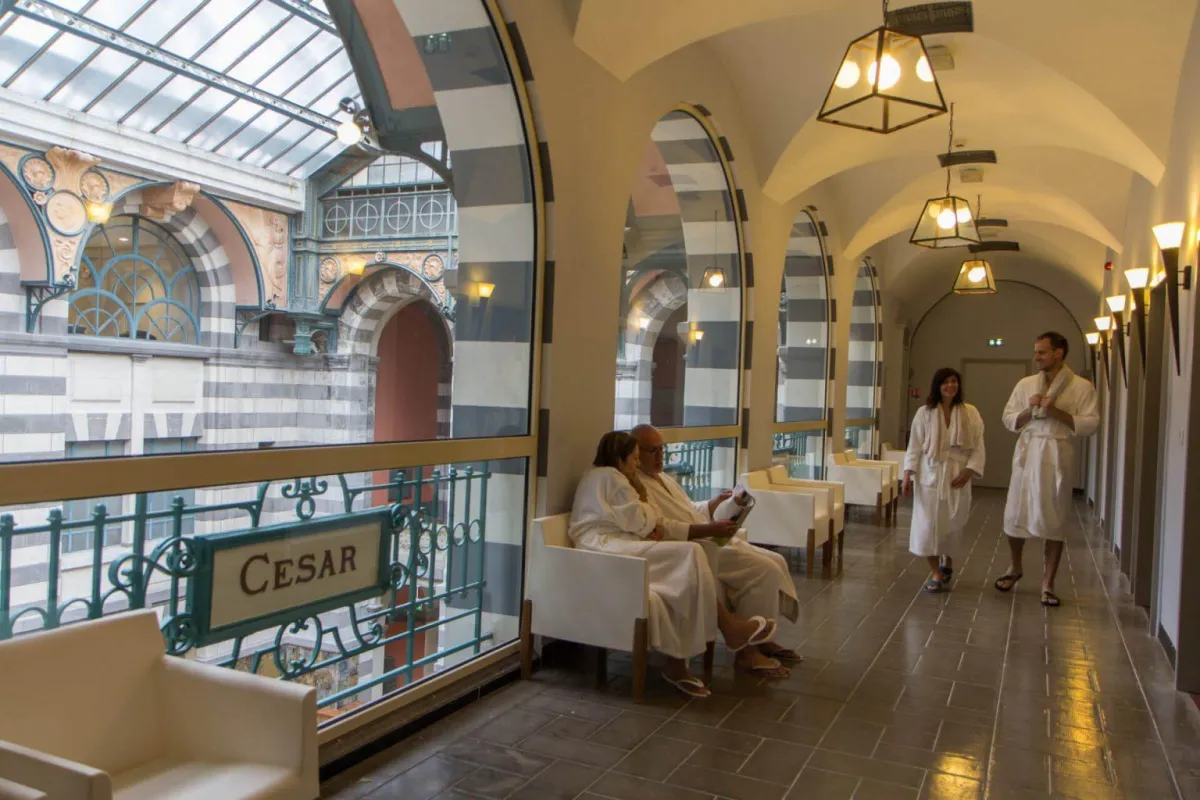
Spain's Deep Waters: The Enduring Faith in Balneotherapy
In a world often obsessed with novelty, Spain's quiet, enduring relationship with its thermal waters feels like a steady heartbeat - one that has pulsed through generations, regimes, and revolutions in medicine. At the core of this connection is the balneario: a term that encompasses not just a facility, but a philosophy. Part spa, part social ritual, part state-supported tradition, the balneario is where Spain’s belief in healing waters becomes not just wellness, but welfare.
Perhaps the most tangible evidence of this faith lies in IMSERSO (Instituto de Mayores y Servicios Sociales), a national program that subsidises spa stays for Spaniards over the age of 55. While similar countries channel retirement support into healthcare or recreation, Spain continues to invest in mineral bathing as a form of preventative medicine and social cohesion. The program, running since the 1980s, attests not just to the country’s abundant geothermal assets, but to a cultural intuition: that the body is best supported not only with pills, but with patience, water, and time.
A Living Heritage of Hydrotherapy
Balnearios in Spain are typically located in natural enclaves, riversides, valleys, forested slopes, where water emerges at specific temperatures and mineral compositions. The Romans first codified many of these locations, but it was in the 19th and early 20th centuries that they flourished as institutions. Belle Époque facades, Moorish mosaics, and colonnaded courtyards still define the architectural language of many balnearios today.
Unlike modern spa resorts, Spanish balnearios are often deeply medical in tone. On arrival, guests undergo an intake with a physician who prescribes a bespoke regimen: perhaps alternating jet pools with mud wraps, or thermal steam with galvanic showers. The focus is not only on relaxation, but on function: easing rheumatism, improving circulation, mitigating respiratory ailments.
IMSERSO: Wellness as Policy
The IMSERSO program, which includes thermal stays among its broader senior services, is rooted in a belief that physical wellbeing and social connectivity are intertwined. Participants often stay for 10 to 12 nights at partner balnearios across the country, with subsidised rates covering accommodation, meals, treatments, and medical oversight.
Beyond health benefits, the program provides vital social contact - especially for older adults in rural or isolated settings. Many return to the same balneario year after year, forming seasonal micro-communities of friendship and familiarity. It is not uncommon to hear stories of romances rekindled or lives reshaped in these waters.
The Rhythms of a Balneario Stay
A day at a balneario flows not unlike a slow poem. Mornings begin with light breakfasts, followed by assigned treatments. Some are solitary (a mineral soak, a compress), others communal (a group hydro-massage circuit, a warm sulphur inhalation). Afternoons are for rest, walks, and long lunches, often featuring regionally focused menus designed to complement the spa’s therapeutic aims. Evenings might include lectures on health, light entertainment, or quiet reading in tiled lounges.
What stands out most is the rhythm: gentle, repetitive, anchoring. Unlike the spectacle of destination spas, balnearios do not aim to dazzle (although some most certainly do!). They aim to steady.
Faith in Water, Backed by Science
Spain's thermal sector is supported by rigorous hydrogeological and medical studies. Universities such as the Complutense in Madrid and research councils like the Spanish Society of Medical Hydrology contribute to an evolving body of evidence that balneotherapy may support musculoskeletal health, skin conditions, respiratory function, and overall mood.
In recent years, a growing interest in "blue health" across Europe has lent further credence to Spain’s long-standing intuition. Studies show that proximity to water, and particularly immersion in mineral-rich sources, may regulate cortisol, boost parasympathetic activity, and even enhance immune response.
Balnearios Today: Between Tradition and Renewal
While some balnearios operate year-round with medical oversight, others have pivoted toward leisure without sacrificing therapeutic roots. Places like Balneario de Archena in Murcia, Lanjarón in the Alpujarras, and Caldes de Montbui near Barcelona have adapted their offerings to include yoga, thermal cosmetics, forest bathing, and gastronomy.
Crucially, many still reserve dedicated slots and pricing for IMSERSO participants - a sign that even in a changing wellness landscape, the social mission of balnearios endures.
A Model Worth Noticing
In an age where wellness can often feel like an individual pursuit, Spain’s balneario culture suggests a different path. One where care is communal, slow, and accessible. Where healing is not simply about escape, but about return - to water, to rhythm, to each other.
As climate, demographics, and healthcare systems evolve, the IMSERSO model offers a rare template: state-supported preventative care rooted in heritage, local economies, and sensory richness. It is both radical and reassuring in its simplicity.
Final Thoughts
To walk through a Spanish balneario is to walk in the footsteps of generations. The tiles may be worn smooth; the waters unchanged. But the feeling endures: of being held, of being known, of finding wellness not in reinvention, but in ritual.
As the rest of the world rethinks the meaning of care, Spain may quietly remind us that some of the best answers lie not in the new, but in the deeply, warmly familiar.